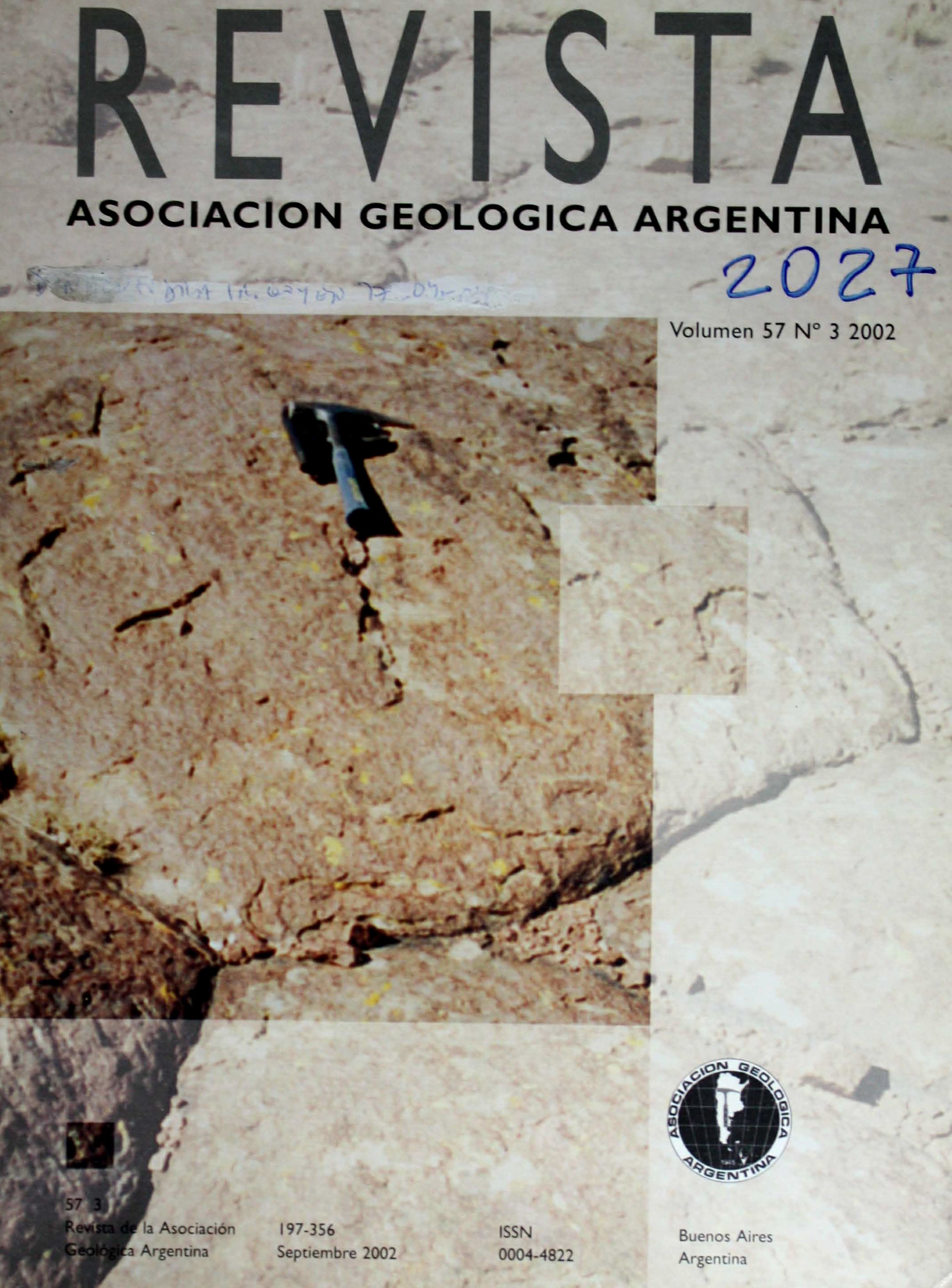Fluid inclusions and stable isotopes in non-ore minerals of the manganese ore deposits in the north of the Córdoba province
Main Article Content
Abstract
In this paper the non-ore minerals of the southern sector of this deposit are studied. Microthermometric analysis on calcite, barite and fluorite show fluid salinities of 2.7 and 4% wt eq. NaCl, and temperatures below 100°C. Isotopes of 13C, 18O and 34S allow to determine a meteoric source for the fluids associated to their precipitation. The d13C values obtained in calcite are considered the result of a fluid in equilibrium with atmospheric CO2 plus the addition of carbon due to dissolution of organic compounds. On the other hand, the d34S values of barites can be explained by another fluid with H2S contents resulting from the dissolution of sulfides from the wall-rock. Finally, the presence of two different fluids is postulated here. An upward fluid was responsible for the barite precipitation where the H2S was oxidized to SO4=. This fluid could form fluorite and silica varieties as its temperature decreases. The existence of a downward fluid explains calcite generation as the descending fluid is heated.
Article Details

This work is licensed under a Creative Commons Attribution-NonCommercial 4.0 International License.
Nota de copyright
Los autores conservan los derechos de autor y garantizan a la revista el derecho de ser la primera publicación del trabajo licenciado según una licencia de atribución Creative Commons que permite a otros compartir el trabajo con el reconocimiento de la autoría y de la publicación en la que se publicó por primera vez.
Declaración de privacidad
Los nombres y direcciones de correo electrónico introducidos en esta revista se usarán exclusivamente para los fines declarados por esta revista y no estarán disponibles para ningún otro propósito u otra persona.

